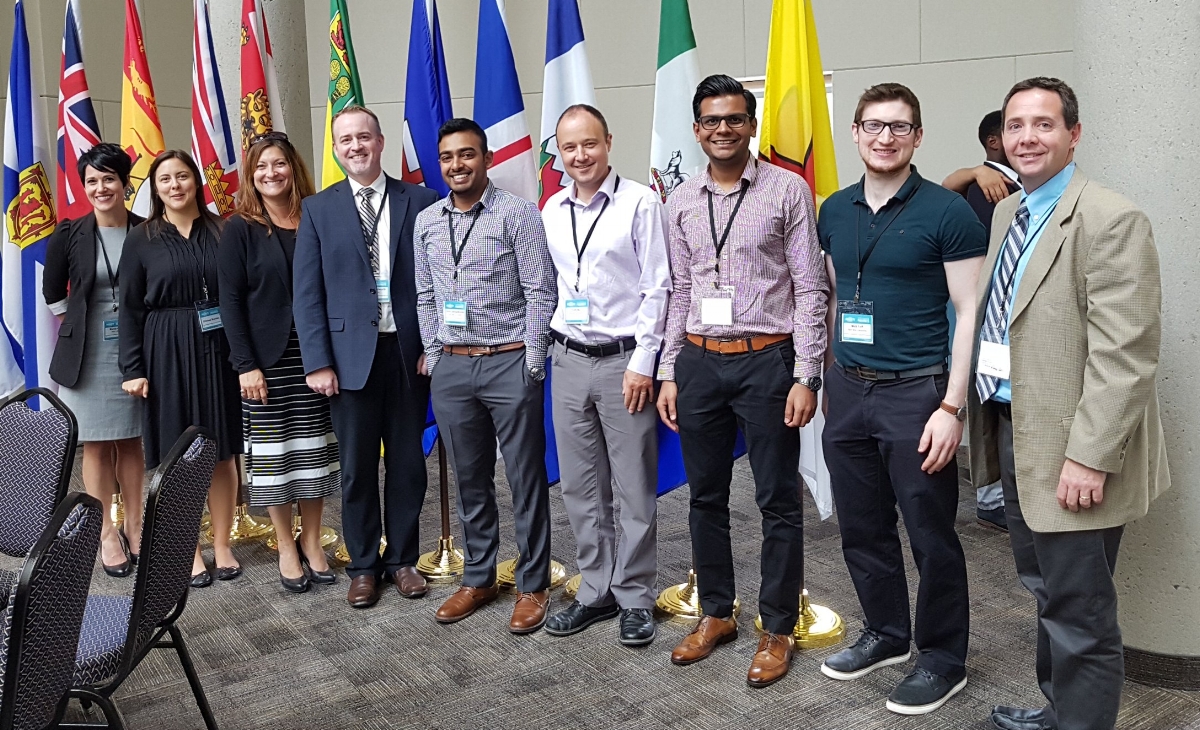Dr. Rowland Marshall and Taylor Lynk
Saint Mary’s University is pleased to announce that Taylor Lynk, a fourth year Bachelor of Science student, is the winner of the inaugural Dr. Rowland Marshall Prize in the Science of New Energy.
Lynk, from Marion Bridge in Cape Breton, will complete her B.Sc. with Honours in Chemistry degree with a Diploma in Forensic Science this year. She is working on her honours project with the supervision of Dr. Christa Brosseau.
The prize will be presented annually to a full-time student enrolled in the Faculty of Science at Saint Mary’s University, for a paper on something new and innovative related to the study of new energy – with particular interest in renewable resources and energy. The award is given for a completed paper or it can be used as seed funding for a thesis. The concept must be explained in fewer than 500 words, supported by images or diagrams as appropriate. When selecting a recipient, the judges consider three variables:
- Recognition of the student’s existing work on new energy sources
- Incubation opportunity for research in new energy
- Incentive for an innovative approach to new energy sources
“Congratulations to Taylor Lynk on receiving the 2017 Prize in the Science of New Energy for her research and paper. Taylor's attainment is specially significant in that this is the first award of this particular new prize in the Science Faculty here at Saint Mary's. Well done, Taylor,” said Dr. Marshall.
The winning paper explores a way to use green materials to synthesize nanomaterials in an environmentally benign way to allow for continued growth of the nanotechnology field.
Working with fellow students in Dr. Brosseau’s lab, she tested using avocado pit extract as an alternative to harsh chemical reducing and capping agents commonly used in noble metal nanoparticle synthesis.
Lynk explained that using avocado pits was an idea conceived by herself and fellow researcher, Osai Clarke, when they were inspired to make use of the waste from a fellow student's lunch. “The avocado pit is a byproduct of avocado processing, so this project could potentially be a good solution for diverting some of the waste generated from avocado consumption,” she said.
She found that this renewable waste product demonstrated superior performance over traditional counterparts, which is a key step in implementing the replacement of chemical feedstocks with sustainable options. This method could be valuable for future large-scale plasmonic applications such as in plasmon-enhanced solar cell technology.
Along with the Dr. Rowland Marshall prize, Lynk has maintained a renewable entrance scholarship with academic achievement increases over two years. She won “Best Undergraduate Oral Presentation in Analytical Chemistry” at the 2017 Science Atlantic Chemistry Conference (ChemCon), two Department awards for “Scholarly Achievements and Academic Excellence in Chemistry,” and has been on the Dean’s List since her first year at Saint Mary’s.
Dr. Rowland Marshall’s connection to Saint Mary’s University spans 55 years. Along with his late wife Margó Takacs Marshall, the former philosophy professor has established a variety of student awards. In 2017, on Canada’s 150th anniversary, he is happy to be still involved in the university’s evolution and success.
















